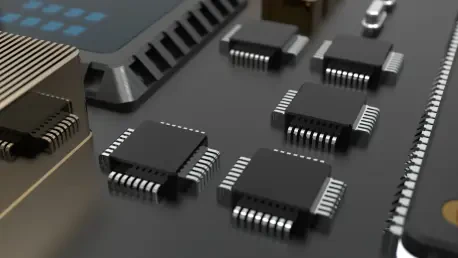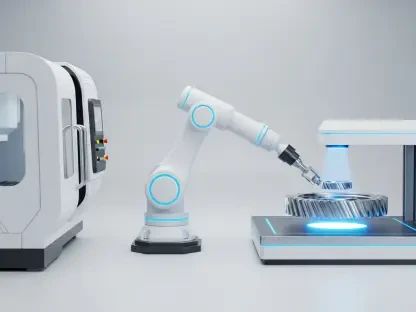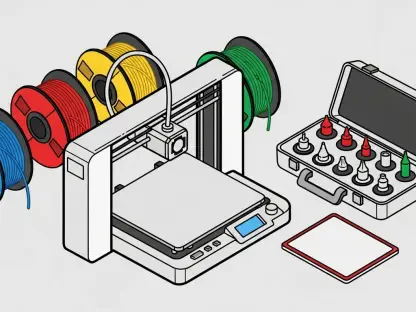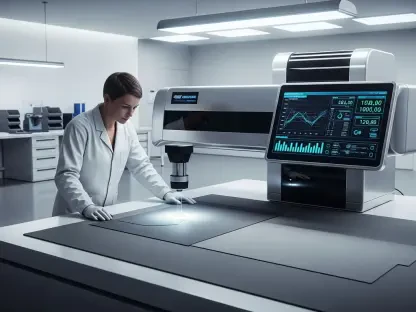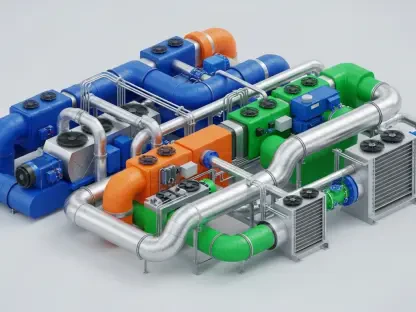The multiturn absolute encoder market is witnessing a significant shift as it gears up for unprecedented growth amid the global automation revolution. In recent years, advancements in technology and the increasing need for precision in machinery and systems have escalated demand for these critical components. From 2025 and beyond, the market is projected to ascend from USD 2.06 billion to USD 3.16 billion by 2032, fueled by a 5.48% compound annual growth rate (CAGR). This impressive growth trajectory highlights the encoders’ vital role in realizing automation, digitization, and smart manufacturing goals.
The Imperative Role of Multiturn Encoders
Precision in Robotics and Industrial Automation
Multiturn absolute encoders are pivotal for precise position sensing in various industries, including robotics, industrial automation, and CNC machinery, where accuracy over multiple rotations is crucial. These encoders are designed to retain position information even during power losses, ensuring that operations resume with minimal disruption. As automation scales across different sectors such as automotive, logistics, and manufacturing, the encoders’ ability to enhance productivity through real-time feedback is indispensable. Furthermore, these encoders support precision robotics, often used in sophisticated applications where safety and high-performance interactions between humans and machines are paramount.
In the world of industrial automation, this technology’s impact is profound, enabling seamless coordination of complex machinery and efficient production lines. Similarly, their integration into renewable energy systems ensures effective monitoring and control, especially within solar and wind installations where multiple rotations must be counted to enhance energy efficiency and reliability. As the demand for precision control intensifies, multiturn encoders are becoming increasingly sought after for their ability to meet these intricate needs.
Catalysts for Market Expansion
Several factors are driving the expansion of the multiturn encoder market. The global push toward Industry 4.0 and the Industrial Internet of Things (IIoT) has emphasized the need for smart encoders that can facilitate real-time diagnostics and system optimization. These devices play a critical role in transforming factories into smart entities, reducing downtime, and cutting maintenance costs by enabling predictive maintenance and performance adjustments. Additionally, advances in miniaturization and sensor technology have led to the development of more efficient multiturn encoders, featuring non-contact magnetic and optical technologies suitable for harsh environments.
As industries increasingly adopt these advanced encoders, the scope of their application widens, encompassing new areas such as medical equipment, aerospace, defense, and packaging. The trend toward miniaturization ensures that encoders become more adaptable, reliable, and energy-efficient, which caters to a broad spectrum of industrial requirements. As a result, the future of multiturn encoders is poised for robust growth, underpinned by technological innovations.
Market Dynamics and Regional Prospects
Diverse Applications and Technological Advancements
The market’s segmentation illustrates the versatility of multiturn absolute encoders across various applications. Classified by type, technology, and region, the encoders cater to industry needs ranging from shaft type to hollow-shaft configurations and optical to magnetic technologies. This diversity is complemented by their application across sectors such as packaging, printing, medical equipment, and more, reflecting an adaptive and responsive market landscape. Regional analysis uncovers specific adoption trends, with North America showing significant use in industries like aerospace and oil & gas, while Europe aligns with automotive manufacturing and Industry 4.0 initiatives.
In contrast, the Asia-Pacific region demonstrates the fastest growth, spurred primarily by rapid expansion in electronics, industrial automation, and robotics sectors in key countries like China, Japan, and South Korea. Meanwhile, markets in South America and the Middle East & Africa are gradually warming up to these technologies, noticing considerable uptake in energy and mining industries. This diverse geographical spread highlights a widespread acceptance and need for multiturn encoders across the globe, driven by unique regional industrial trends and requirements.
Competition and Strategic Innovations
The competitive landscape of the multiturn encoder market is characterized by moderate consolidation, with key industry players enhancing their technological prowess and product reliability. Companies like HEIDENHAIN, SICK AG, Schneider Electric, and Pepperl+Fuchs are among those leading the way, prioritizing innovations that integrate digital ecosystems to maintain a competitive edge. Investments in smart encoder systems with digital interfaces, like IO-Link and EtherCAT, reflect the growing emphasis on intelligent automation.
Furthermore, the adoption of AI-based diagnostics within encoder systems exemplifies a shift toward predictive and proactive maintenance strategies. As technological advancements continue to drive change, these strategic innovations set the stage for future growth in intelligent automation. Consequently, the market’s trajectory appears bright, with increasing opportunities for sector players to capitalize on emerging trends and maintain long-term relevance in the evolving digital landscape.
Opportunities and Challenges Ahead
Tapping into New Market Opportunities
Key opportunities in the multiturn encoder market lie in the continued growth of robotics and automation, which increasingly rely on high-speed, high-accuracy encoders. These components are essential for next-generation robotic systems that demand precise motion control. Additionally, the extension of IIoT presents further prospects, encouraging the integration of encoders with digital twin and AI-driven monitoring systems. This integration considerably influences areas like CNC machines, medical imaging, and precision manufacturing tools, where advanced motion control technology has become a standard requirement.
Moreover, the utility of multiturn encoders under extreme conditions expands their application in challenging industries such as aerospace, mining, and offshore operations. Their ability to perform reliably in harsh environments supports their adoption across sectors where traditional encoders might fall short. Thus, the market continues to evolve as it captures new possibilities and responds to the dynamic needs of modern industries.
Navigating Market Challenges
Despite its promising outlook, the market for multiturn encoders faces several obstacles. The higher upfront installation cost compared to incremental encoders poses a significant challenge, particularly for small-scale operations. As businesses evaluate cost-effectiveness alongside technological benefits, the initial investment can be a barrier to entry for companies with limited budgets. Furthermore, the complexity of these systems necessitates rigorous integration and calibration within existing control frameworks, potentially complicating adoption.
In addition, the fragmented nature of the market in regions like Asia-Pacific, due to numerous local players, may lead to inconsistencies in pricing and quality. Navigating these challenges requires a clear strategy from vendors and manufacturers, emphasizing education on the benefits of advanced encoders and ensuring compatibility with existing systems to drive wider acceptance and usage.
Conclusion: Charting a Path Forward
The multiturn absolute encoder market is undergoing a transformative phase as it prepares for remarkable growth driven by the worldwide automation boom. Over recent years, technological advancements coupled with the pressing need for precision in machinery and complex systems have surged demand for these essential components. Forecasts from 2025 onward predict the market will expand from USD 2.06 billion to USD 3.16 billion by 2032, backed by a compound annual growth rate (CAGR) of 5.48%. This notable growth is a testament to multiturn absolute encoders’ crucial role in achieving ambitions for automation, digitization, and smart manufacturing. As industries continue to embrace these innovations, the push for enhanced machinery efficiency and accuracy is more critical than ever, prompting manufacturers to incorporate sophisticated encoder technologies. As such, these devices are expected to be influential in realizing future manufacturing and automation capabilities, meeting intricate demands, and setting new industry standards.
